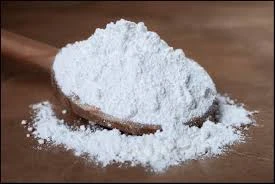
Understanding E476 Food Additive and Its Implications in Food Industry
Understanding E476 A Food Additive in Our Modern Diet
In the ever-evolving landscape of food science, additives play a crucial role in enhancing the quality, safety, and shelf-life of our food products. Among these, E476, also known as polyglycerol polyricinoleate (PGPR), has garnered attention for its multiple applications in the food industry. This article delves into the properties, uses, and safety of E476, highlighting its significance in our everyday diets.
What is E476?
E476 is a food emulsifier made from the esterification of glycerol and fatty acids derived from castor oil. Specifically, it is a polyol that facilitates the blending of oil and water-based substances, making it invaluable in food formulations. Its ability to reduce surface tension allows it to stabilize emulsions, which are commonly found in various food products.
Uses of E476 in Food Products
The versatility of E476 is evident in its widespread usage across numerous food categories. It is predominantly found in chocolate and confectionery products, where it helps to improve texture and viscosity. By providing a smoother mouthfeel, E476 enhances the overall sensory experience of consumers.
In addition to chocolates, E476 is often used in baked goods, margarine, and dairy products. In the case of baked goods, it serves to improve the dough's consistency and increase the volume of baked items, contributing to a lighter texture. In margarine, E476 aids in creating a stable emulsion, ensuring that the product maintains its spreadability while retaining freshness.
Moreover, E476 is utilized in processed foods such as sauces and dressings, where it ensures uniform distribution of ingredients and prevents separation
. This stability is crucial for maintaining the quality of food products throughout their shelf lives.e476 food additive

Safety and Regulatory Status
The safety of food additives like E476 is a topic of ongoing research and regulatory scrutiny. E476 has been evaluated by several food safety authorities, including the European Food Safety Authority (EFSA) and the U.S. Food and Drug Administration (FDA). These organizations have deemed E476 safe for consumption within specified limits.
In the European Union, E476 is included in the list of approved food additives and is subject to regulatory standards that govern its use. This ensures that consumers are protected from potential health risks associated with excessive consumption of additives. It is essential for consumers to stay informed about the ingredients in their food, and understanding additives like E476 contributes to making knowledgeable dietary choices.
Consumer Perspectives
As consumers become increasingly conscious of food choices and health, the presence of food additives, including E476, often raises questions. While some people prefer to avoid processed foods with additives, others recognize the role of emulsifiers in enhancing food quality and safety.
For those who are concerned about additives, it is advisable to read food labels carefully. E476 is typically listed among the ingredients, allowing informed choices. Individuals with specific dietary restrictions or allergies should consult with healthcare professionals regarding the impact of various food additives on their health.
Conclusion
E476, or polyglycerol polyricinoleate, serves as an essential food additive with a wide range of applications in our modern diet. From improving texture in chocolates to stabilizing sauces, its role cannot be overlooked in the food industry. As with any food additive, understanding its uses, benefits, and regulatory status is vital for consumers who aim to make informed nutritional decisions. By being aware of what goes into our food, we can navigate the culinary landscape with confidence and ensure that we make choices that align with our health and dietary preferences.
-
Buy High-Quality Trichloroisocyanuric Acid for Sale | TCCA 90% SupplierNewsAug.30,2025
-
Pure Sodium Dichloroisocyanurate Dihydrate | Powerful DisinfectantNewsAug.29,2025
-
Industrial Chemicals: Quality & Purity for Every IndustryNewsAug.28,2025
-
Nitrile Rubber Honoring Strict Production StandardsNewsAug.22,2025
-
Aspartame Ingredients Honoring Food Safety ValuesNewsAug.22,2025
-
Fertilizer for Balanced Plant NutritionNewsAug.22,2025
-
Cyanide Gold Processing with High Purity AdditivesNewsAug.22,2025
Hebei Tenger Chemical Technology Co., Ltd. focuses on the chemical industry and is committed to the export service of chemical raw materials.
-

view more DiethanolisopropanolamineIn the ever-growing field of chemical solutions, diethanolisopropanolamine (DEIPA) stands out as a versatile and important compound. Due to its unique chemical structure and properties, DEIPA is of interest to various industries including construction, personal care, and agriculture. -

view more TriisopropanolamineTriisopropanolamine (TIPA) alkanol amine substance, is a kind of alcohol amine compound with amino and alcohol hydroxyl, and because of its molecules contains both amino and hydroxyl. -

view more Tetramethyl Thiuram DisulfideTetramethyl thiuram disulfide, also known as TMTD, is a white to light-yellow powder with a distinct sulfur-like odor. It is soluble in organic solvents such as benzene, acetone, and ethyl acetate, making it highly versatile for use in different formulations. TMTD is known for its excellent vulcanization acceleration properties, which makes it a key ingredient in the production of rubber products. Additionally, it acts as an effective fungicide and bactericide, making it valuable in agricultural applications. Its high purity and stability ensure consistent performance, making it a preferred choice for manufacturers across various industries.





